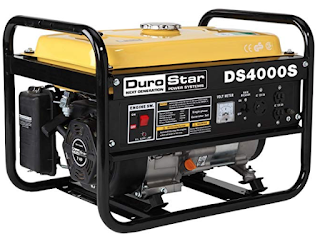- No ATM or credit card ability; stores only accepting cash, rationing supplies
- No TV, radio, cell phone, computer or iPad
- No A/C or heating
- No running water
- No hot showers
- No gasoline
- No lights
- No refrigerator or freezer
- No electric stove, oven, toaster or microwave
- No clothes washer
- No clothes dryer
- No electric toothbrush, razor, hair dryer or curlers (starting to sound serious now :-)
So what do we need? According
to the Rule of 3, you can die in:
- 3 seconds without security;
- 3 minutes without air;
- 3 hours without shelter in hostile weather;
- 3 days without water &
- 3 weeks without food.
Do we really need security in a 2
week power outage? New Orleans needed it only days after a hurricane
when people ran out of food and water and started door to door looting. So
after 2-3 days of a power (or water) outage over a large area, it is highly likely that 24-7 armed security plan is needed.
Air is less likely to be a concern in a power outage unless a wildfire causes it, or chemical warfare, in
which case a gas mask is needed. Shelter may be a concern if you are not
able to get home, or if your home is damaged
beyond use. In this case, having supplies in your car or with you would be important. A tent or at the least an emergency blanket is recommended. For our power outage lets assume you are home which is the most common scenario.
However, water will be a serious concern in most any extended event. For this reason, it is important
that you prepare an Emergency Water Supply now. You need one
gallon per day, per person. For two weeks, that is 14 gallons per person so a family of four needs 56 gallons of water. This equates to about 18 cases of bottled water (500 ml) or eleven 5 gallon jug which offers a lower cost per gallon than half liter (500 ml) bottles.
Step 1:
Start with a water dispenser and a five-gallon jug/bottle of water.
Step 2: Get
a backup 5-gallon bottle of water (or 2).
Step 3: Get
a rack for your backup water bottles and
keep it full.
Step 4: Get
another rack and keep it full.
Step 5:
Repeat step 4 until you have your target water supply.
Bottles are an excellent water
supply, but you should have other alternatives. Know where your closest
community pool, creek or lake is located and have some means to treat the
water. Our Emergency Water Supply link
has many details on having a good supply
of water.
Food should be less of concern, but still one to think about. Self-heating MRE's would be awesome, but with a 5 year shelf life on something you do not eat regularly, they are not ideal. Our post on
Building your food stores the right way is a solid plan. However, in addition to food, you
must have a means of Food Preparation & Preservation during a power outage. It is also critical to have two hand operated can openers (not electric).
If you have a propane stove, then
you are in luck. Natural gas stoves are good as long as the gas company
has back up power to maintain pressure. A
BBQ Grill that uses propane and having trees around that provide fire wood is the ideal. Better if you have a
full back up propane bottle to swap
out. With these things and good NATO or Kitchen matches, you are in good shape, but you need to
plan. These lighters are also very handy and affordable.
Step 1 is to implement your security plan. Ideally a two person watch,
24 hours, 7 days a week. Short, 4-hour shifts are best as they allow a more vigilant watch. Change 1 of the 2 watch persons every two hours so there is
someone fresh coming on duty every 2 hours. You should have some form of communications between the security team(s) and a central command center.
Step 2 is a plan for food and
water. Secure/ assemble as much as you initially can, and then prepare to ration it. Open the refrigerator only once
per day for a brief minute to take out food to eat for the day. After the
refrigerated foods are gone, start on the frozen foods. Save all canned
and dried goods with long expiration dates to the last. Ration your food supply
so the refrigerated and frozen goods are consumed before they go bad. Then ration the other goods to ensure they will last as long as possible.
Have a half dozen of these $5 lights that also serve as solar powered battery chargers. A larger scale solar power system would be nice to have.
Have a half dozen of these $5 lights that also serve as solar powered battery chargers. A larger scale solar power system would be nice to have.
Here is a good test for you. Go camping for a 3 day weekend with only what you have in your survival back pack. Here is a link to the first Alone Survival show back pack contents and a link to the Prepper Handbook Survival Backpack. OR stay home and don't use any electricity to see how that works for you. Use this as a learning process to be better prepared for an actual extended power outage. After this, please come back and let us know how it went with a comment to this blog.
For more information:
Blog Table of Contents
Power Outage Preps
Power Outage Heater
DIY Solar System
The SHTF Day One
Survive a 2 week Power Outage
For more information:
Blog Table of Contents
Power Outage Preps
Power Outage Heater
DIY Solar System
The SHTF Day One
Survive a 2 week Power Outage
















